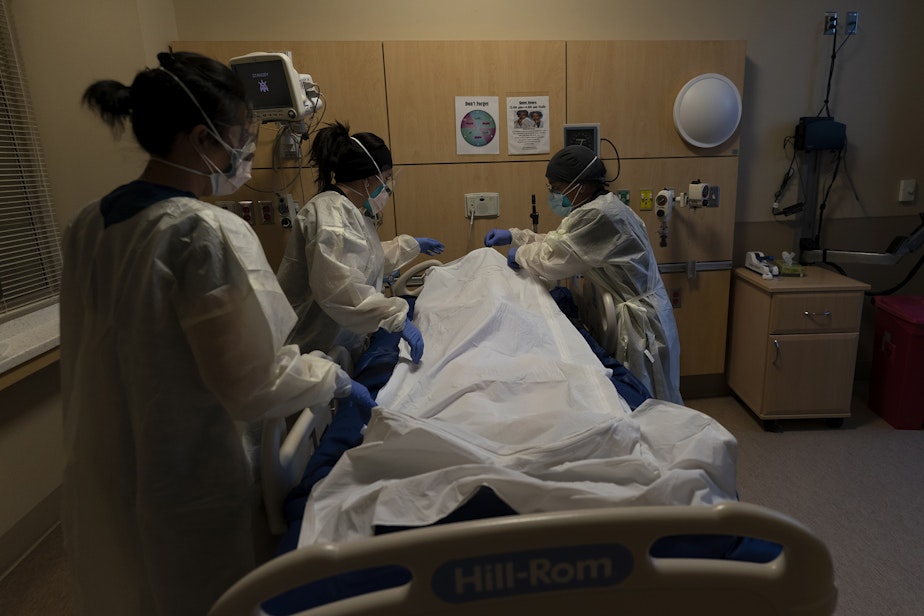A healthcare researcher weighs in on the nurse-to-patient ratio debate

Washington state lawmakers are considering a new law that would set nurse-to-patient ratios at hospitals. A group of healthcare unions called Washington Safe + Healthy is pushing hard for the proposal. They say even before Covid, nurses had way too many patients, which was leading to burnout and poor outcomes for patients.
What's the evidence that's true? To find out, KUOW’s Kim Malcolm spoke with Patricia Pittman, a health policy researcher at George Washington University, and director of its Health Workforce Research Center. She was hired by the union group to analyze previous studies on healthcare staffing.
This interview has been edited for clarity.
Patricia Pittman: There have really been decades of research and hundreds of studies that have shown that low nurse-to-patient staffing ratios have a negative effect on patient outcomes. In particular, we know that patients die more frequently if there’s low nurse staffing. We also know that there are more hospital-acquired infections and other kinds of harms that can occur when patients are in the hospital if they're not sufficiently staffed with nurses.
Kim Malcolm: Can you give us a concrete example of how not having enough nurses working on a particular shift could lead to a patient dying?
The primary mechanism here is what's called “missed care,” where nurses are covering say six different patients, as opposed to four, and two patients are having a crisis at the same time. They may not be able to attend to that patient in a timely fashion, so care is missed. That may begin an infection, that may be actually sepsis when a patient is dying, and the nurse doesn't get there in time to be able to rescue the patient. There are a variety of situations that can occur, but the main problem is that nurses can't be everywhere at once, and that leads to missed care.
I understand you've also looked into how staffing ratios affect the nurses who are on the job. What did you find there?
There are a number of studies, at least six, that show that low nurse-to-patient ratios lead to low job satisfaction. A few studies started using the burnout measure as well. We know that higher burnout leads to turnover and the kind of crisis that we're seeing in hospitals today where large numbers of nurses are leaving the bedside. We've also seen some research showing an increase in injuries to nurses themselves, in particular needlestick injuries, related to nurse staffing.
Does the research indicate anything on what staffing ratios mean for the economics of hospitals?
Actually, it does. There are at least three studies that suggest that increased nurse staffing may actually not only pay for itself but have significant benefits to payers and to patients in terms of reducing costs over time. It's also a big question now as hospitals have had to rely increasingly on travel nurses, which are four or five times more expensive for the hospital than increasing the number of nurses that they directly hire.
The old equation of when it might make sense to use travel nurses versus increasing the number of budgeted positions, I think, is beginning to change. So hopefully, there are some hospitals beginning to see that this is potentially not entirely negative, or at all negative for them.
The Washington State Hospital Association is against this legislation. The association says we're having a nursing shortage right now, and a law like this is not going to help solve that problem. What do you say to that?
Well, it might actually solve that problem. One of the reasons that nurses are leaving is precisely because they feel that they're working in unsafe conditions, and that has everything to do with nurse staffing. The problem is, in the last 20 years, despite this massive evidence base, hospitals have really not been investing in nurses to the extent that is needed to improve health outcomes, and nurses under the current circumstances are fed up. I think if hospitals want to attract nurses back to the bedside, things are going to have to change.
Listen to the interview by clicking the play button above.




